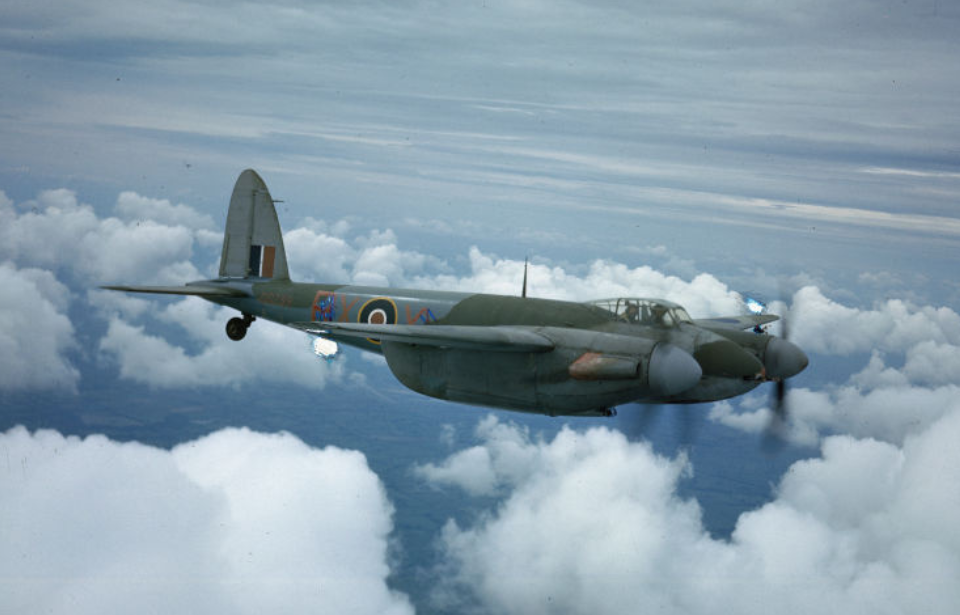The de Havilland Mosquito was a British twin-engine, multirole combat aircraft that served with the Royal Air Force (RAF) and other Allied air forces during the Second World War. It was constructed primarily of wood, earning it the nickname, “Wooden Wonder.” The Mosquito was first introduced in 1941, and the final operational units were retired in 1963.
Development of the de Havilland Mosquito
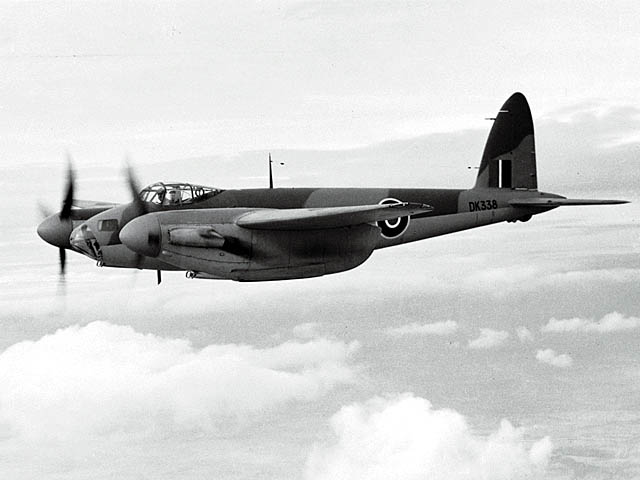
In the 1930s, de Havilland gained a reputation for its high-speed aircraft, notably the DH.88 Comet. The company also pioneered composite wood construction with the DH.91 Albatross. Wooden aircraft showed superiority, making them lighter and easier to manufacture.
On September 8, 1936, the British Air Ministry released requirements for a new bomber, including the need for a twin-engine, with the ability to carry 3,000 pounds of bombs and hit a top speed of 275 MPH. Examples produced to fill this role include the Avro Manchester and Handley Page Halifax.
de Havilland Mosquito specs.
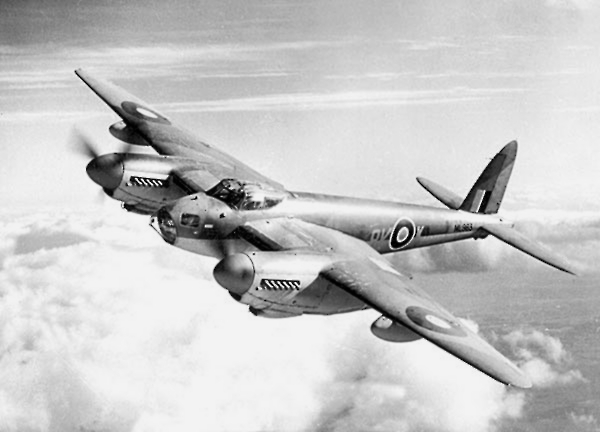
The de Havilland Mosquito had an overall sleek design, characterized by high wings further ahead of the fuselage, a cockpit above the nose and a cone effect tapering the airframe to the tail. This was best described by F/O Frank Ruskell of No. 109 Squadron RAF:
“The first thing that struck one about the Mosquito was the beauty of line of the fuselage, tailplane, fin and engine cowlings. They all went together and made a lovely aeroplane. The cockpit cover also had a sweet line, and the undercarriage’s simplicity and the treaded tyres set the whole thing off. The aircraft set on the ground looking pert and eager, and it was easy to become fond of, which was no means true of all aeroplanes.”
The Mosquito was powered by two Rolls-Royce Merlin engines. These V-12 piston aero engines, with three-bladed, constant-speed propellers, were also used on other British Warbirds, including the Avro Lancaster, Hawker Hurricane and Supermarine Spitfire, and allowed the aircraft to reach a maximum speed of 415 MPH at 28,000 feet.
Service during the Second World War
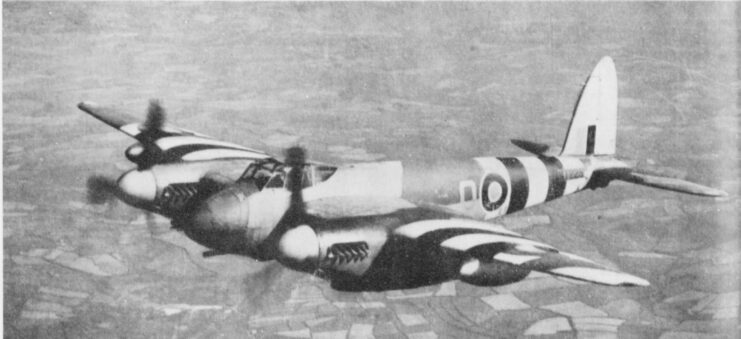
The de Havilland Mosquito entered service on November 15, 1941 and quickly became known as a highly versatile aircraft. It took on various roles, including medium bomber, fighter-bomber, night fighter, maritime strike aircraft and photo-reconnaissance. During the war, it excelled at each of these roles.
The first production Mosquito became part of the No. 1 Photographic Reconnaissance Unit, and the first mission took place on September 19, 1941.
Soon after taking on more aggressive roles as a bomber, the Mosquito became feared by the Germans. Lecturing German aircraft manufacturers, Hermann Göring said of the aircraft:
Oslo Mosquito Raid
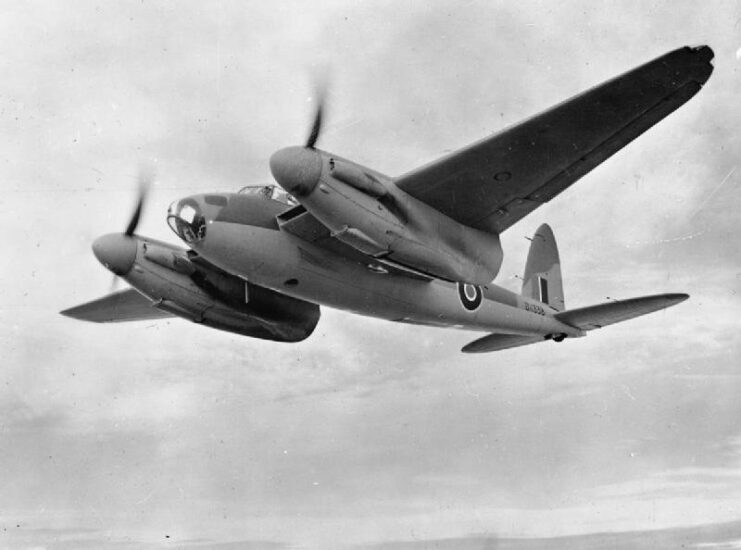
On September 25, 1942, four de Havilland Mosquitos attacked the Victoria Terrasse building in Oslo, Norway – the Gestapo headquarters. Flying less than 100 feet at low levels, the aircraft, armed with 500-pound bombs with delayed fuses, departed Scotland via the North Sea.
Despite flying at low levels, two Fock-Wulf Fw 190s intercepted them. One Mosquito was forced to land by one of the attacking enemy fighters, while the other German aircraft had to land after clipping a tree with its wing. The three remaining Mosquitos dropped their bombs onto the headquarters. The building, however, wasn’t destroyed. One bomb didn’t explode, while the others detonated after they’d crashed through the other wall and outside of the structure.
Operation Jericho
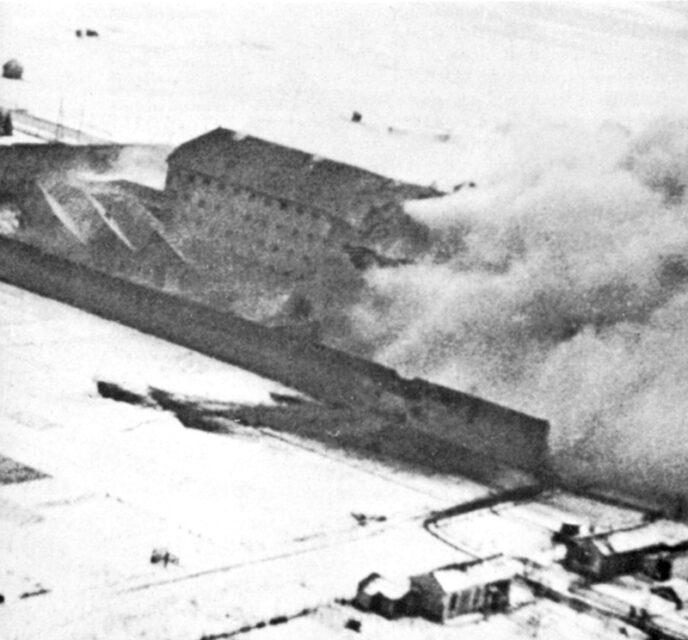
On February 18, 1944, Mosquitos and Hawker Typhoons bombed Amiens Prison in German-occupied France. The attacking force flew at low levels, making holes in the prison walls and killing German guards by destroying their barracks.
